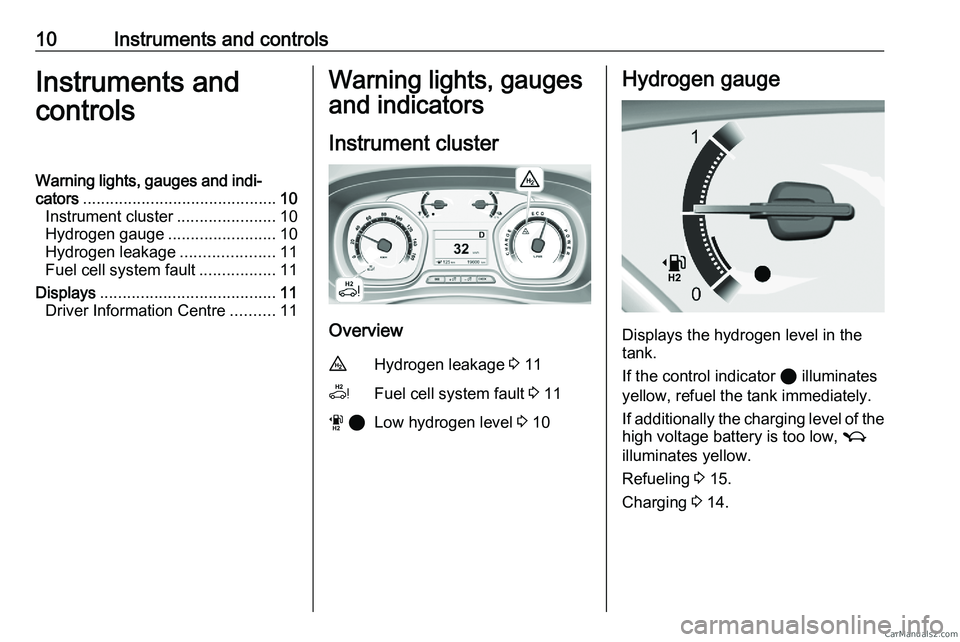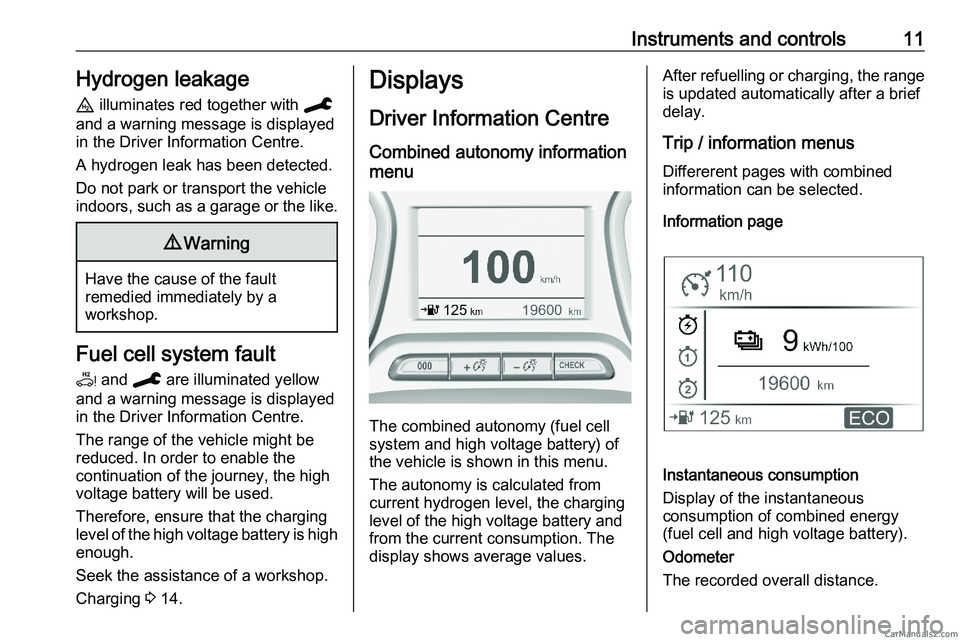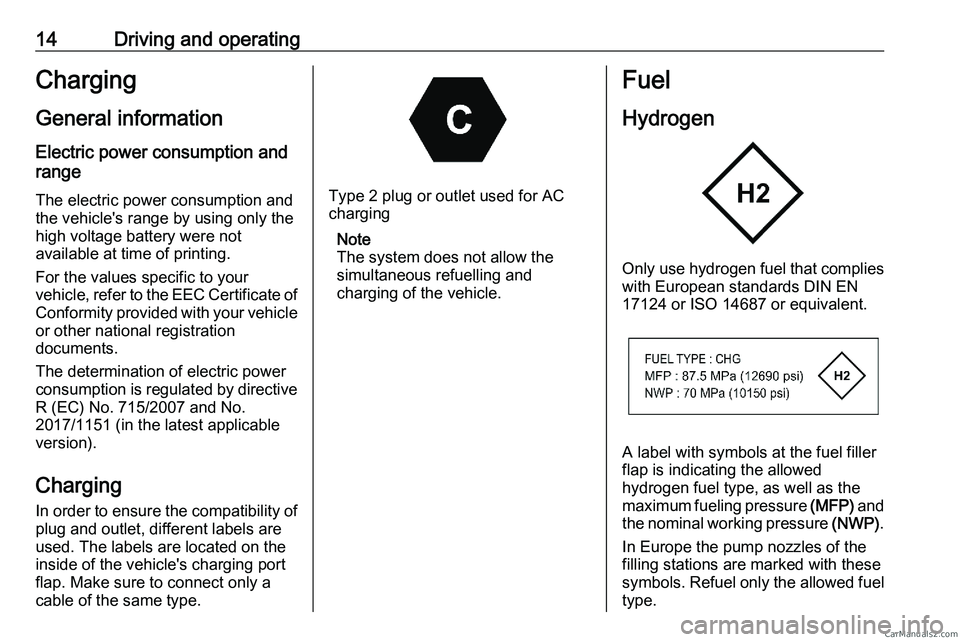2023 PEUGEOT EXPERT charging
[x] Cancel search: chargingPage 288 of 348

286
Alphabetical index
Charge level indicator (Electric) 22
Charging cable
180
Charging cable (Electric)
179
Charging connector
(Electric)
178, 183, 185–186
Charging flap (Electric)
178, 183, 185–186
Charging system (Electric)
5, 8, 27, 176, 191
Charging the traction battery
(Electric)
22, 176, 183, 185–186
Checking the engine oil level
19
Checking the levels
191–193
Checking tyre pressures
(using the kit)
204, 206–207
Checks
191, 194–196
Checks, routine
194–195
Child lock
131
Child lock on rear windows
131
Children
106, 113, 119–121, 128, 128–129
Children (safety)
131
Child seats
106, 109–116, 128
Child seats, conventional
112–116
Child seats, i-Size
128
Child seats, ISOFIX
119–121, 128, 128–129
Cleaning (advice)
177, 199–201
Closing the boot
44
Closing the doors
29, 33, 43–44
Collision Risk Alert
162–163
Compressor, tyre inflation
204
Configuration, vehicle
26–27
Connected applications
269
Connection, Android Auto
251, 269
Connection, Apple CarPlay
251, 268Connection,
Bluetooth
239, 252–253, 269–270, 274–275
Connection, Wi-Fi network
270
Connectivity
268
Consumptions
27
Container, AdBlue®
197
Control, emergency boot release
36
Control, emergency door
29, 34–35
Control, heated seats
50–51
Control stalk, lighting
88
Control stalk, wipers
93–95
Control unit
179–180
Courtesy lamp
86
Courtesy lamp, front
86–87, 215
Courtesy lamp, rear
86–87, 215
Courtesy lamps
86–87, 215
Crew cab, fixed
65–66
Crew cab, folding
66
Cruise control
151, 153–154, 156–158
Cruise control,
adaptive
153–154, 158, 161–163
Cruise control,
adaptive with Stop function
153–154
Cruise control by
speed limit recognition
153–154
D
DAB (Digital Audio Broadcasting) -
Digital radio
235–236, 249, 272
Date (setting)
28, 255, 277
Daytime running lamps 89, 212–213
Deactivating the passenger
airbag
107, 111–112
Deactivation of DSC (ESC)
101
Deadlocking
34
Deferred charging
27
Deferred charging (Electric)
27, 178, 183, 186
Defrosting
52, 81
Defrosting, rear screen
82
Demisting
81
Demisting, rear
82
Dimensions
229
Dipstick
19, 192
Direction indicators
(turn signals)
89, 212–214, 216
Display, head-up
11
Domestic charging
180
Domestic charging (Electric)
184–186, 227
Door pockets
68
Doors, rear
43–44
Doors, side
39
Doors, side-hinged
33–34, 43–44, 214
Drive,
electric
5, 8, 27, 176, 189, 191, 216, 220, 227
Driver’s attention warning
166
Drive selector (Electric)
145, 195
Driving
132–133
Driving aids camera (warnings)
150
Driving aids (recommendations)
150
Driving economically
7
Driving modes
146
Driving modes (Electric)
146–147 CarM an uals 2 .c o m
Page 291 of 348

289
Alphabetical index
Motor, electric 136, 191, 227
Mountings, ISOFIX
117, 125, 128, 128–129
MP3 CD
237
N
Navigation 263–265
Navigation, connected
266–268
Net, cargo
53–55
Net, high load retaining
72–73
Number plate lamps
215
O
Obstacle detection 168
Oil change
192
Oil consumption
192
Oil, engine
192
On-board tools
203
Opening the bonnet
190
Opening the boot
29–30, 44
Opening the doors
29–30, 38–39
Opening to 180°
43–44
P
Pads, brake 195
Paint
200, 231
Paint colour code
231
Paint, matt 200
Paint, textured
200
Parcel shelf, rear
69
Parking brake
138, 195
Parking brake, electric
138–140, 195
Parking (sensors)
168
Parking sensors, audible and visual
168
Parking sensors, front
169
Parking sensors, rear
168
Passenger compartment temperature
pre-conditioning (Electric)
27, 85
Pedestrian horn (Electric)
100, 133
Plates, identification
231
Player, Apple®
238, 250, 273
Player, MP3 CD
237
Player, USB
236, 249, 272
Port, USB
70, 236, 249, 251, 268, 272
Power
22
Power indicator (Electric)
8, 22
Power mode
147
Pressures, tyres
195, 204, 207, 231
Pre-tensioning (seat belts)
106
Priming pump
202
Priming the fuel system
202
Profiles
254, 277
Protecting children
107, 109–113,
119–121, 128, 128–129
Public fast charging station
179, 185
Puncture
204–205, 207R
Radar (warnings) 150
Radio
234–235, 247–248, 271
Radio, digital (Digital Audio
Broadcasting - DAB)
235, 249, 272
Range, AdBlue®
20, 193
RDS
248, 271
Rear bench seat
56–57
Rear screen (demisting)
82
Recharging the battery
218–219
Recharging the traction battery
180
Recharging the traction battery
(Electric)
176, 183, 185–186
Recirculation, air
79–81
Recorder, trip distance
23
Reduction of electrical load (mode)
188
Regeneration of the particle filter
194
Regenerative braking (deceleration
by engine braking)
145–146
Reinitialising the remote control
36
Reinitialising the under-inflation
detection system
149
Reminder, key in ignition
136
Reminder, lighting on
89
Remote control
29–34, 134
Remotely operable functions
(Electric)
27, 85, 186
Removing a wheel
209–211
Removing the mat
67
Replacing bulbs
211–212, 214, 216
Replacing fuses
216 CarM an uals 2 .c o m
Page 292 of 348

290
Alphabetical index
Replacing the air filter 194
Replacing the oil filter
194
Replacing the passenger
compartment filter
194
Reservoir, screenwash
193
Resetting the trip recorder
23
Reversing camera
151, 170, 172
Reversing lamp
214, 216
Roof bars
189
Roof rack
189
Running out of fuel (Diesel)
202
S
Safety, children 107, 109–113,
119–121, 128, 128–129
Saturation of the particle filter (Diesel)
194
Screen, instrument panel
24
Screen menu map
251
Screen, multifunction (with audio system)
233
Screenwash
94
Screenwash, front
93
Screenwash, rear
94–95
SCR (Selective Catalytic Reduction)
21, 196
Seat and bench seat, rear, fixed
56–57, 59–60
Seat and bench seat,
rear, on rails
56–57, 61–62
Seat angle
48
Seat belts
103–106, 112
Seat belts, rear
105
Seat, bench front, 2-seat
50, 105
Seats, electric
49
Seats, front 48–49
Seats, heated
50–51
Seat(s), individual, rear, on rails
63–65, 105
Seats, rear
57–62, 110
Selector, gear
141–142
Sensors (warnings)
151
Serial number, vehicle
231
Servicing
18, 194–196
Settings, equipment
26–27
Settings, system
254, 277
Sidelamps
88, 212–214, 216
Side repeater (turn signal)
213
Silent vehicle warning sound
(Electric)
100, 133
Sliding side door, electric
33–34, 38–41
Sliding side door, hands-free
42–43
Smartphone
28
Snow chains
149, 188, 209
Snow chains, link
188, 209
Socket, 12 V accessory
69
Socket, 220 V
70
Socket, auxiliary
237, 250, 272
Socket, Jack
237, 272
Speed limiter
151, 153–156
Speed limit
recognition
152–153, 155, 157, 161–163
Speedometer
151
Sport mode
147
Stability control (ESC)
100, 102–103
Starting a Diesel engine
174
Starting the engine
134, 136
Starting the vehicle
135, 137, 141–145
Starting using another battery
137, 217Station, radio 234, 247–248, 271
Stay, engine bonnet
190–191
Steering mounted controls,
audio
233, 245, 258
Steering wheel (adjustment)
51
Stickers, customising
200
Stopping the vehicle
136–137, 142–145
Stop & Start
25, 78, 147–148,
174, 190, 194, 220
Storage
50, 56, 65–66, 68
Storage compartments
68
Storage wells
65–66, 68
Stowing rings
71
Sunroof, panoramic glass
74
Sunshine sensor
77
Super-fast charging (Electric)
185–186, 227
Suspension
195
Switching off the engine
134, 136
Synchronising the remote control
36
T
Table position 48
Table, retractable sliding
74–76
Tables, aircraft
69
Tables of engines
227
Tables of weights
224
Table top, working
56
Tailgate
36, 44
Tailgate rear screen
44
Tank, fuel
174–175
Technical data
224, 227 CarM an uals 2 .c o m
Page 298 of 348

6 Introduction
Introduction
Introduction
This Owner's Manual supplement
provides all the necessary
information about the fuel cell
version.
It is only valid in combination
with the Owner's Manual for your
vehicle and cannot be considered
separately.
General information The vehicle uses a mid-power
hydrogen fuel cell system that is
supported by a high voltage battery,
in order to provide sufficient
autonomy. The fuel cell drivetrain contains of
three subsystems:
● The
fuel cell system (1) located in
the engine compartment.
● The high voltage battery (2) located under the front seats.
● The hydrogen tank system (3) located under the load
compartment.
The hydrogen reacts in the fuel cell
with oxygen supplied from the
ambient air. Water, heat and
electrical energy emerge from this
reaction.
Water and excess air are released
through the exhaust, while the
electrical energy is used to provide
the electric motor with power.
Additionally to that, the high voltage
battery can be charged via a charging
port in order to guarantee sufficient
autonomy in case of an empty
hydrogen level. Electric energy is also
provided by regenerative braking.CarM an uals 2 .c o m
Page 302 of 348

10 Instruments and controls
Instruments and
controls
Warning lights, gauges and indi‐ cators ........................................... 10
Instrument cluster ......................10
Hydrogen gauge ........................10
Hydrogen leakage .....................11
Fuel cell system fault .................11
Displays ....................................... 11
Driver Information Centre ..........11 Warning lights, gauges
and indicators
Instrument cluster Overview
u
Hydrogen leakage 3 11
v Fuel cell system fault 3 11
w 2 Low hydrogen level 3
10 Hydrogen gauge
Displays the hydrogen level in the
tank.
If the control indicator 2 illuminates
yellow, refuel the tank immediately.
If
additionally the charging level of the
high voltage battery is too low, M
illuminates yellow.
Refueling 3 15.
Charging 3 14.CarM an uals 2 .c o m
Page 303 of 348

Instruments and controls 11
Hydrogen leakage
u illuminates red together with C
and a warning message is displayed
in the Driver Information Centre.
A hydrogen leak has been detected.
Do not park or transport the vehicle
indoors,
such as a garage or the like. 9
Warning Have the cause of the fault
remedied immediately by a
workshop. Fuel cell system fault
v and C are illuminated yellow
and a warning message is displayed
in the Driver Information Centre.
The range of the vehicle might be
reduced. In order to enable the
continuation of the journey, the high
voltage battery will be used.
Therefore, ensure that the charging
level
of the high voltage battery is high
enough.
Seek the assistance of a workshop.
Charging 3 14. Displays
Driver Information Centre Combined autonomy information
menu The combined autonomy (fuel cell
system and high voltage battery) of
the vehicle is shown in this menu.
The autonomy is calculated from
current hydrogen level, the charging
level of the high voltage battery and
from the current consumption. The
display shows average values. After refuelling or charging, the range
is updated automatically after a brief
delay.
Trip / information menus
Differerent pages with combined
information can be selected.
Information page Instantaneous consumption
Display of the instantaneous
consumption of combined energy
(fuel cell and high voltage battery).
Odometer
The recorded overall distance.CarM an uals 2 .c o m
Page 305 of 348

Driving and operating 13
Driving and
operating
Starting and operating .................13
Starting the engine ....................13
Parking ...................................... 13
Driver assistance systems ...........13
Parking assist ............................ 13
Charging ...................................... 14
General information ...................14
Fuel .............................................. 14
Hydrogen ................................... 14
Refuelling .................................. 15 Starting and operating
Starting the engine Note
The operating temperature of the
vehicle is between -20 °C and +50
°C.
Vehicle
operation is restricted to this
ambient temperature range.
Parking Note
Please note that the vehicle may
emit noises after the engine has
been switched off. This is normal
and does not indicate any damage. Driver assistance
systems
Parking assist Note
If a coupling ball bar is attached to
the
vehicle, the detection zone of the
parking sensors is disturbed and
they do not operate properly.
Deactivate the parking assist
everytime a coupling ball bar is
attached to the vehicle.CarM an uals 2 .c o m
Page 306 of 348

14 Driving and operating
Charging
General information Electric power consumption and
rangeThe electric power consumption and
the vehicle's range by using only the
high voltage battery were not
available at time of printing.
For the values specific to your
vehicle,
refer to the EEC Certificate of
Conformity provided with your vehicle
or other national registration
documents.
The determination of electric power
consumption is regulated by directive
R (EC) No. 715/2007 and No.
2017/1151 (in the latest applicable
version).
Charging
In order to ensure the compatibility of
plug and outlet, different labels are
used. The labels are located on the
inside of the vehicle's charging port
flap. Make sure to connect only a
cable of the same type. Type 2 plug or outlet used for AC
charging
Note
The system does not allow the
simultaneous refuelling and
charging of the vehicle. Fuel
Hydrogen Only use hydrogen fuel that complies
with European standards DIN EN
17124 or ISO 14687 or equivalent. A label with symbols at the fuel filler
flap is indicating the allowed
hydrogen fuel type, as well as the
maximum
fueling pressure (MFP) and
the nominal working pressure (NWP).
In Europe the pump nozzles of the
filling stations are marked with these
symbols. Refuel only the allowed fuel type.CarM an uals 2 .c o m